
click image to zoom
Honey bees have been extensively studied in their biology, ecology, anatomy, morphology, physiology, behavior and general beekeeping, and there is a vast literature on each of these aspects. However, the issues concerning honey bees in their condition as farm animals have not been deal with rigorous zootechnical criteria. This book presents methods, models and systems related to how to gather,…

click image to zoom
Jacques van Alphen describes the research that unravelled the behaviour of honey bees. Fascinating stories! How, for example, can a hive of several tens of thousands of individuals function without a leader? And what about the complicated sexual life of honey bees and, a problem Darwin was already considering, what is the ideal ratio of numbers of males to females?…

click image to zoom
Honey bees are one of the most important agricultural animals on Earth. These tiny creatures often fly around unnoticed, doing work they have mastered to provide not only for themselves, but for the plants, animals, and humans that make up our shared home. Given the complex and increasing health challenges that honey bees face, the importance of collaborating together to develop fresh…
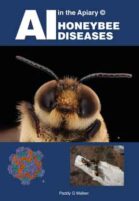
click image to zoom
This book is a comprehensive view of the breadth of different honeybee diseases. Each disease is covered by: • Classification • Biology • Transmission • Symptoms • How to identify the disease • Impact on the colony • Advice on mitigation In its own right this has required a significant amount of research. AI has helped to detail the content…
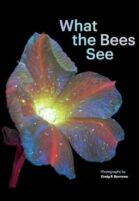
click image to zoom
'Bees see in the ultraviolet spectrum. Their world is completely foreign to the human eye, full of electric, alien colours and luminous, vibrant light that we can only imagine. Shooting UVIVF doesn't show us exactly how bees see the world, but it does enable us to better contemplate pollinator vision and understand this vital species and its importance to the…
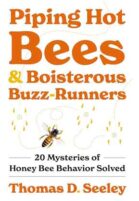
click image to zoom
Piping Hot Bees and Boisterous Buzz-Runners takes readers inside a world seldom seen even by beekeepers, shedding light on twenty of the most compelling mysteries of honey bee behavior. Thomas Seeley has devoted a lifetime to the study of honey bees and their colonies, unraveling the secrets of these wondrous insects in a career spanning six decades. In this book,…
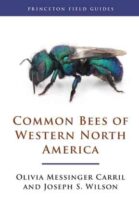
click image to zoom
Olivia Messenger Carril
Joseph S. Wilson
A PORTABLE, FULL-COLOR PHOTOGRAPHIC GUIDE TO THE MOST COMMONLY SEEN BEES IN THE WESTERN UNITED STATES AND CANADA. Bees play a vitally important role in the pollination of native plants and agricultural crops around the globe. These stunningly beautiful insects come in a wide range of sizes, shapes, and colors. There are more than 3,000 species in western North America,…
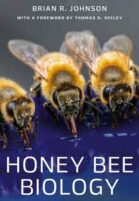
click image to zoom
"Honey Bee Biology will become the new definitive textbook for entomology courses, research scientists, science writers, and scientists interested in bees as a model system. Beekeeping teachers and keen students will buy this book as will the curious beekeeper just wanting to learn new things and be a better beekeeper." Ann Chilcott. Scottish Expert Beemaster and author (BBKA News Incorporating The…
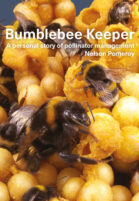
click image to zoom
Forget what you know of (honeybee) beekeeping: this is a different game. In this unique and detailed text Nelson Pomeroy lays it bare. In a candid account of his career as a student, scientist, businessman and teacher, he details most aspects of working with bumblebees: outdoor nesting sites, laboratory observation hives, crop pollination and commercial-scale rearing. His innovations range from…
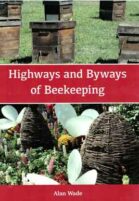
click image to zoom
Alan Wade is a research scientist and has kept bees for well over forty years. In Highways and Byways of Beekeeping he ventures down some of the many. back roads beekeepers have taken. He explores the limits of our knowledge and understanding of honey bees while introducing us to some of the lost arts of beekeeping practice. Highways and Byways…
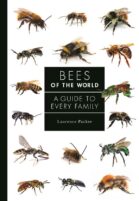
click image to zoom
A beautifully illustrated introduction to the incredible variety of bees from around the world (Hardback). When many people think of bees, they are likely to picture the western domesticated honey bee, insects that live in large, socially complex societies inside a hive with a single queen and thousands of workers. But this familiar bee is just one of more than…
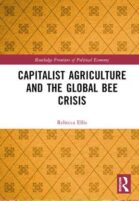
click image to zoom
Capitalist agriculture relies heavily on the pollination work of bees, but this system harms bees in innumerable ways. Indeed, human agriculture is one of the main culprits for the declining populations of wild bees and the declining health of honeybees. This book presents a political ecology of pollination that critically examines how managed honey bees and wild bees are harmed…
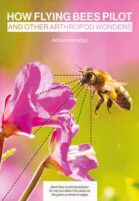
click image to zoom
In the visual system of the honeybee, feature detectors for the amount of blue and distribution of green vertical edges were slowly revealed over the past century, as outlined in a companion booklet (Horridge, 2021). The method was to train bees on one of many targets and then test the trained bees until they failed when the last remaining cue…
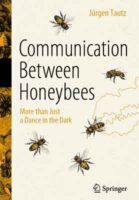
click image to zoom
How Do Bees Find Flowers? During the history of bee research, scientists have peered deep into the inner life of bee colonies and learned much about the behaviour of these insects. Above all, the bee waggle dance has become a famous and extensively discussed phenomenon. Nevertheless, recent insights reveal that while bees are social insects inside the hive they also…
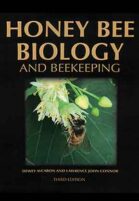
click image to zoom
Dewey Caron
Lawrence J. Connor
Since its release in 1999, Honey Bee Biology & Beekeeping has become a widely accepted textbook of apiculture. Universities use it to teach college students beekeeping and beekeepers use it to teach other beekeepers. It concentrates on the ‘why’, ‘how’ and ‘when’ of beekeeping. It explains bee and beekeeping basics in a manner meaningful to people who lack an intensive…
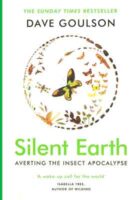
click image to zoom
'Read this book, then look and wonder' Sunday Times 'A powerful book' Mark Cocker, Financial Times 'Thoughtful, frightening and yet hugely eenjoyable ... This book will make you think differently about our right of dominion over the planet' Daily Telagraph We have to learn to live as part of nature, not apart from it. Insects are essential for life as…
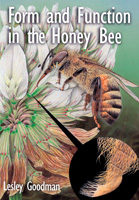
click image to zoom
Lovely book for serious students of honey bee biology. It has wonderful illustrations and is packed with information. If you are an entomology student or studying for BBKA exams then it is a worthwhile read and is considered a standard text. "The book focuses on detailed descriptions of bee body parts and how they work, but the title is woefully…
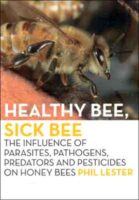
click image to zoom
'Impeccably researched ... The story is told with immense style' Prof. Ben Oldroyd, University of Sydney Phil Lester's first book, The Vulgar Wasp, was about one of the world's most hated insects. His second is about just the opposite - the honey bee, arguably one of our best-loved six-legged creatures. People have revered honey bees for centuries. Today we celebrate…

click image to zoom
Abu Hassan Jalil
David W. Roubik
This literature is for enthusiasts who have difficulty remembering scientific names but can recognize geometric shapes. A preliminary look at what is termed as the most difficult genus in the Indo-Malaya stingless bee group to identify and differentiate between species by morphology. This book will take the readers on a journey to explore the various aspects of Tetragonula brood structure…
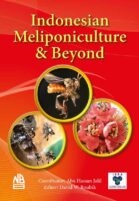
click image to zoom
Abu Hassan Jalil
David W. Roubik
Synopsis: The 3rd instalment in a series of literature on ASEAN Meliponiculture and Beyond, this portion entails the varied and diverse Stingless Bee Fauna in the Indonesian archipelago. We attempt to bridge the different beekeeping and culture methods in hiving, colony acquisition or multiplication, forage provisioning, nest building material sources and regulating extreme weather or local conditions. To address conservation…
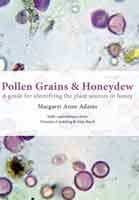
click image to zoom
This book describes, in detail, a simple approach for beekeepers, to identify the plant sources of their own honey. They will occasionally find they have a special honey, and then the jars can be labelled accordingly. From 2019 to 2021, beekeepers from The UK and Continental Europe sent me samples of their honey, and the collection of digital photos from…
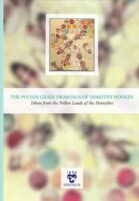
click image to zoom
The Pollen Loads of the Honeybee by Dorothy Hodges, an artist and experienced beekeeper, was first published 1952. It included drawings of pollen grains which will never be surpassed. The originals are preserved at the Royal Botanic Gardens, Kew. This booklet reproduces these drawings.
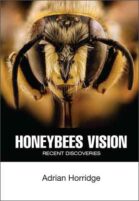
click image to zoom
Professor Adrian Horridge has thoroughly enjoyed a long and productive career in scientific research. At 17 he won a scholarship to St John's College Cambridge, where he spent 10 years, from student to a fellowship, ending in the Zoology Department working with new techniques of recording from nerve cells. Some of this time was spent at the Naples Marine Laboratory…
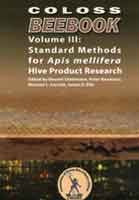
click image to zoom
Vincent Dietemann
Peter Neumann
Norman L. Carreck
James D. Ellis
Standard methods for Apis mellifera product research contains papers on royal jelly, beeswax, propolis and brood as human food, honey, venom and pollen. These seven papers have been written by 125 authors from 23 countries. Like the previous volumes, papers in Volume Ill are organized according to research topics. The authors have compiled the most relevant methods for both laboratory…
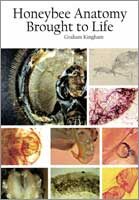
click image to zoom
This book uses photo essays to set out and display the anatomy, internal, external of the honeybee with over 350 detailed micrographs, together with slide images and drawings. Pests and other additional hive activities are also included. It will appeal to anyone interested in this fascinating insect and be particularly valuable to beekeepers studying for their British Beekeepers Association Module…
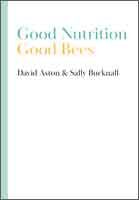
click image to zoom
David Aston
Sally Bucknall
The importance of pollinator species to man’s survival and the functioning of the world’s ecosystems is recognised. Environmental and other stressors have taken their toll on many pollinator species and their abundance. The European Honey bee (Apis mellifera) and man have had a long mutually beneficial relationship and it is vital that this continues. Like all organisms, honey bees need…
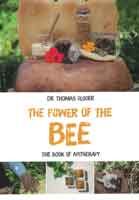
click image to zoom
You know honey, of course: But did you know that you can brush your teeth with honey? And that perga is a healthy energy snack? And that royal jelly strengthens the cardiovascular system and prevents viral infections? And that propolis protects the immune system as well as the liver and kidneys? And that a bee sting can do more than…
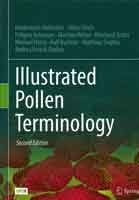
click image to zoom
Heidemarie Halbritter
Silvia Ulrich
Friògeir Grimsson
Martina Weber
Reinhard Zetter
Michael Hesse
Ralf Buchner
Matthias Svojtka
Andrea Frosch-Radivo
This book offers a fully illustrated compendium of glossary terms and basic principles in the field of palynology, making it an indispensable tool for all palynologists. It is a revised and extended edition of "Pollen Terminology. An illustrated handbook,’” published in 2009. This second edition, titled "Illustrated Pollen Terminology" shares additional insights into new and stunning aspects of palynology. In…
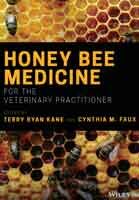
click image to zoom
Terry Ryan Kane
Cynthia M. Faux
Honey Bee Medicine for the Veterinary Practitioner offers an authoritative guide to honey bee health and hive management. Designed for veterinarians and other professionals, the book presents information useful for answering commonly asked questions and for facilitating hive examinations. The book covers a wide range of topics including basic husbandry, equipment and safety, anatomy, genetics, the diagnosis and management of…
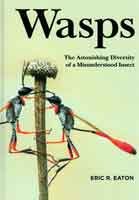
click image to zoom
Wasps are far more diverse than the familiar yellowjackets and hornets that harass picnickers and build nests under the eaves of our homes. These amazing, mostly solitary creatures thrive in nearly every habitat on Earth, and their influence on our lives is overwhelmingly beneficial. Wasps are agents of pest control in agriculture and gardens. They are subjects of study in…
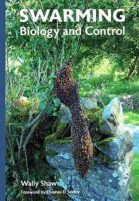
click image to zoom
One of the key events in the bee keeping year (for both the bees and the beekeeper) is the swarming season. In order to obtain the maximum honey yield from colonies, the beekeeper needs to manage the natural swarming process. Much has been written about swarming but this often takes the form of rather prescriptive instructions for swarm control which…
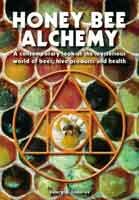
click image to zoom
This is the first English edition of an important book on "Honey bee alchemy" by a Polish researcher. An entirely original, unparalleled work dedicated to the mysterious aspects of the life of bees, the magical properties of the products they produce, and the chemical composition associated with their medicinal properties. This book will be of great interest to beekeepers where…
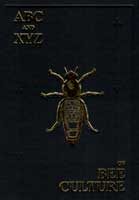
click image to zoom
Keith S. Delaplane
James E. Tew
Jennifer Berry
Clarence H. Collison
Ann Harman
Kim Flottum
• 42nd Edition (2020) • Over 800 pages packed with information • Hundreds of Color photos and illustrations • More than 50 Contributors • A MUST for every beekeeper large and small • A mix of reference, the how and why things are done and a history of how beekeeping got where it is today! In 1877 A. I. Root…
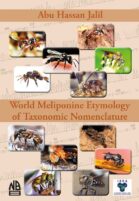
click image to zoom
Describes the Etymology of every name ever used in Meliponine Taxonomy Worldwide. For enthusiast who has ever wondered how and why specific epithets and exotic sounding names are given. Some may not even sound scientific yet so important and relevant to the locality and some even describe their anatomy. This compendium will be very useful to students of Entomology and…
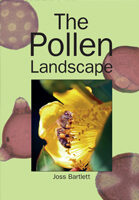
click image to zoom
Honey bees carrying pollen are a familiar sight to anyone who has watched them collecting it from flowers or bringing it back to a hive. But which kinds of pollen do they use, how do they find it, and what do they use it for? Environmental pressures on all pollinating insects, including honey bees, mean that questions like these have…
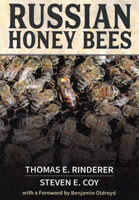
click image to zoom
Thomas E. Rinderer
Steven E. Coy
Russian Honey Bees are a stock of honey bees that were bred to be resistant to Varroa mites and have good beekeeping functionality for both honey production and pollination. This book describes the project to produce the Russian honey bee stock, conducted over 20 years of work by the combined efforts of scientists and beekeepers. Practical information on the management…
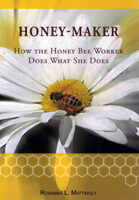
click image to zoom
Your Guide to One of the Most Amazing Species on the Planet Today! Established along with European settlers, honey bees are an essential part of the American landscape. Yet, how do we define a honey bee? And how does the honey bee accomplish the many tasks that aid not only the survival of the colony but our own as well?…

click image to zoom
Jay is an imaginative bee scientist who communicates clearly using every-day language. His book is an absorbing, provocative, entertaining and uplifting read. Scientific research sometimes produces information that is difficult to take advantage of in practice; until later translational research fills the gaps enabling us to understand the fuller picture. Thus, we tend to progress in waves as initial frustration…
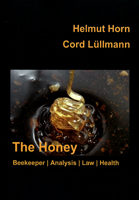
click image to zoom
Helmut Horn
Cord Lüllmann
Honey is one of nature's most valuable raw materials - and has been for over twelve thousand years. Its constituents are valued in nutrition as well as in medicine and cosmetics. Like no other agricultural product, honey production is in harmony with nature, because the bee depends on an intact environment. This highly topical standard work provides everything about honey:…
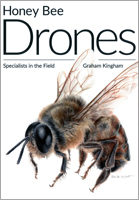
click image to zoom
This book concentrates only on the drone - the male honey bee. It provides details regarding the drone's internal and external anatomy, production and development, behaviour, role in the hive, genetics and more. Copiously illustrated, the book also discusses the latest research updates on drones. Graham Kingham is a retired mechanical quality engineer who keeps a few hives in Devon.…
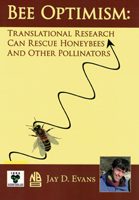
click image to zoom
Jay is an imaginative bee scientist who communicates clearly using every-day language. His book is an absorbing, provocative, entertaining and uplifting read. Scientific research sometimes produces information that is difficult to take advantage of in practice; until later translational research fills the gaps enabling us to understand the fuller picture. Thus, we tend to progress in waves as initial frustration…
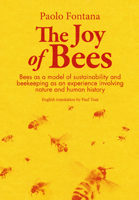
click image to zoom
Paolo Fontana is an Italian naturalist and researcher at the Edmund Mach Foundation in Trento (Italy). President of the World Biodiversity Association, he has also been a beekeeper for more than 30 years. As an entomologist he has taken part in numerous research expeditions, studying the faunas of Mediterranean as well as tropical countries and describing dozens of species new…
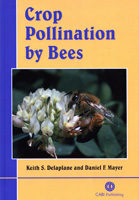
click image to zoom
Keith S. Delaplane
Daniel F. Mayer
The collapse of the ubiquitous honey bee population during the past 20 years has caused a pollination vacuum for many crops. Surveys and grower experience indicate that a crisis exists in our pollinator populations. This book is an accessible, practical and authoritative research-based guide to using bees for crop pollination. It emphasises conserving feral bee populations as well as more…
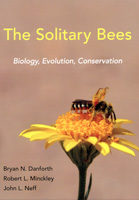
click image to zoom
Bryan N. Danforth
Robert L. Minckley
John L. Neff
While social bees such as honey bees and bumble bees are familiar to most people, they comprise less than 10 percent of all bee species in the world. The vast majority of bees lead solitary lives, surviving without the help of a hive and using their own resources to fend off danger and protect their offspring. This book draws on…
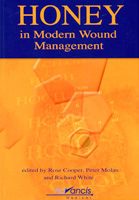
click image to zoom
Rose Cooper, Peter Molan and Richard White
Recent years have seen a reintroduction in the use of honey as a modern wound management product. Records found in the Edwin Smith Surgical Papyrus tell us that honey was used extensively in Egyptian medicine. This dates back to around 1700 BC, but is thought to contain knowledge from a much earlier era, possibly 3000-2500 BC. In the Ebers Papyrus…

click image to zoom
In this hardback book, Adrian Horridge sets out the curious and contentious history of how the visual system of the honeybee came to be understood and how, in his view, the current accepted theory is completely wrong. Based on his own meticulous experimental work and historic analysis of past literature over many years, Horridge tells the story of a century…
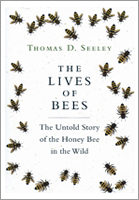
click image to zoom
The Latest important book from a world leading scientist! (Hardback, 432 pages) Humans have kept honey bees in hives for millennia, yet only in recent decades have biologists begun to investigate how these industrious insects live in the wild. The Live of Bees is Thomas Seeley's captivating story of what scientists are learning about the behaviour, social life, and survival…
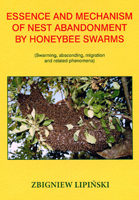
click image to zoom
This hardback book is a new updated edition of the work which was awarded a Gold Medal at the XXXVII Apimondia Congress, Durban 2001. It reviews in great detail the factors responsible for swarming, nest abandonment and related phenomena. This volume is very well researched and listed in its 312 pages over 50 pages of references. Not really suitable for the…
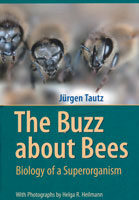
click image to zoom
With spectacularly beautiful colour photographs and an easily understandable text The Buzz about Bees tells the story of honeybees in a new perspective. Based on the latest data, notably from his own research group, Jürgen Tautz provides a wonderful insight into the realms of bees. “Whereas bee colonies were once seen as perfect societies of selfless workers and drones ruled…
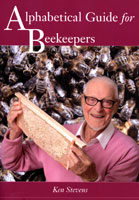
click image to zoom
A weighty tome by a former County Beekeeping Instructor of Devon and later Sussex which could be seen as an A - Z of all beekeeping knowledge
.




















































